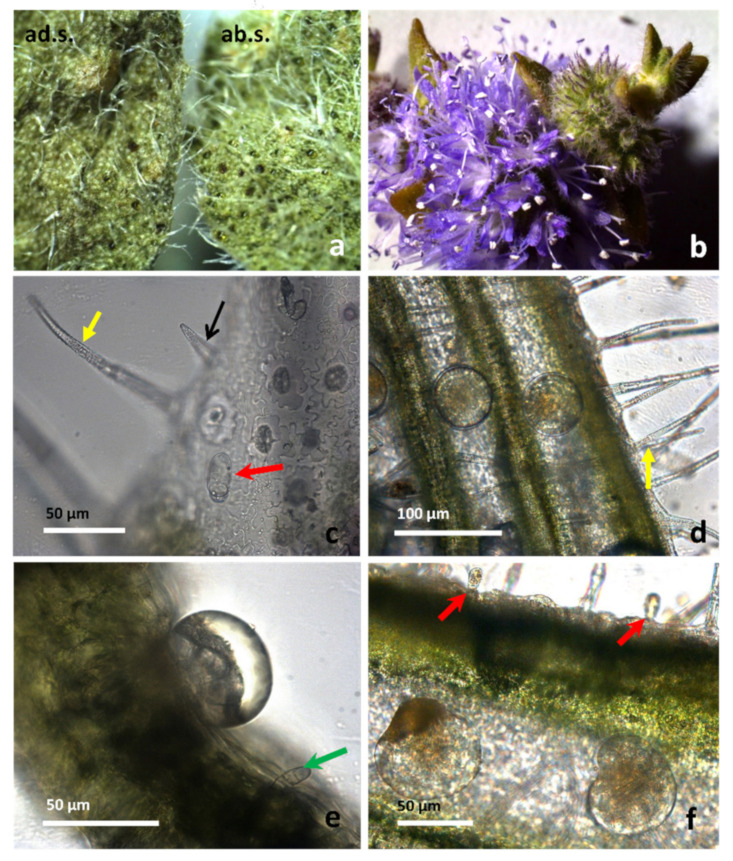Figure 2.
M. pulegium leaves (a, c and e) and flowers (b, d and f). (a) Comparison between adaxial (ad.s.) and abaxial (ab.s.) surfaces of mature leaves, showing a higher density of peltate trichomes on the abaxial side. (b) Inflorescence. Different kinds of trichomes are visible on the leaf (c,e) and on the calyx (d,f). (c) A short unicellular trichome is indicated by black arrows, a long multicellular uniseriate trichome by a yellow arrow, and a capitate type I trichome by a red arrow. (d) On the flower calyx, many peltate trichomes are scattered between the ribs, while many long, non-glandular trichomes are also visible (yellow arrow). (e) Transversal section of a leaf with a peltate trichome showing a large subcuticular space filled with EO, and a capitate type II trichome (green arrow).

